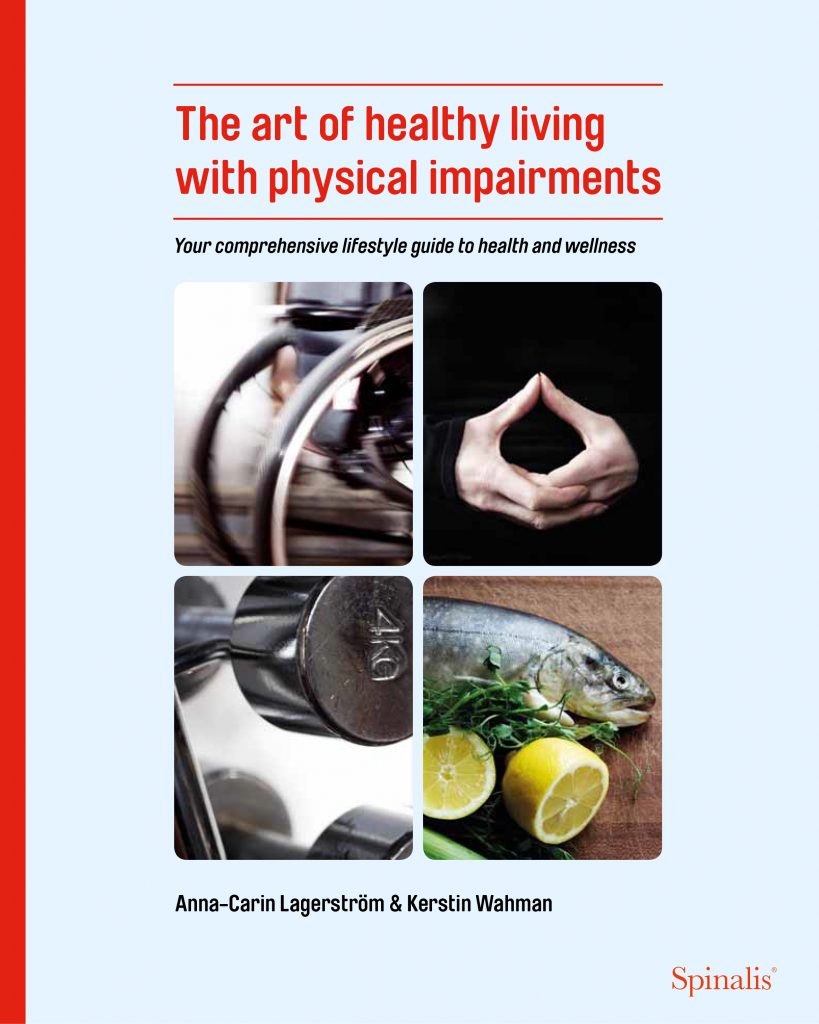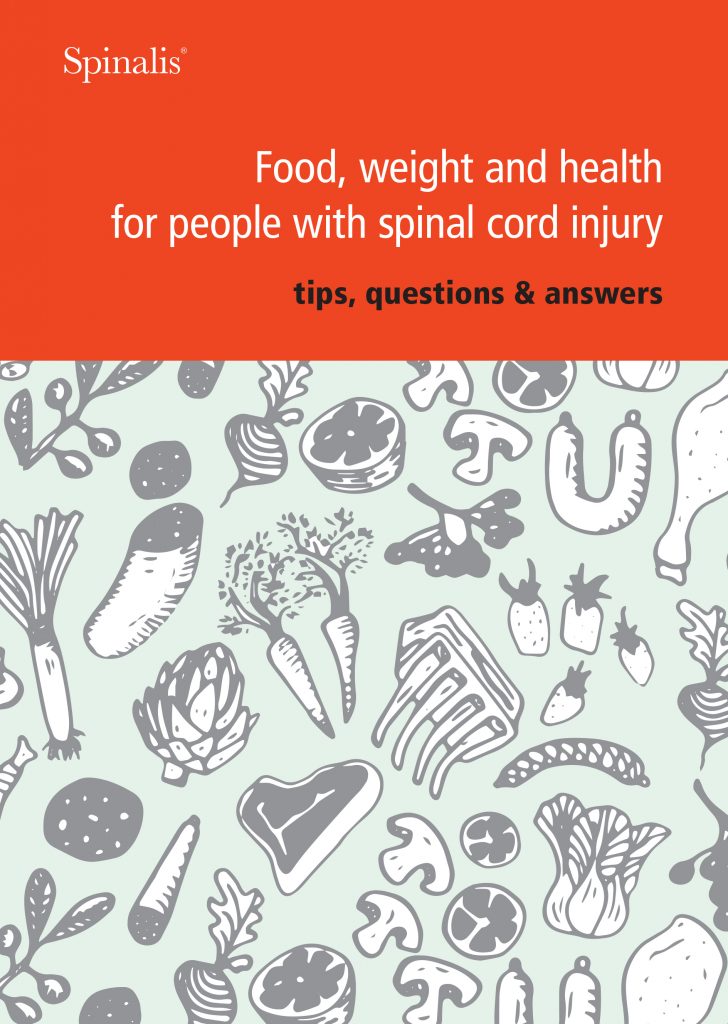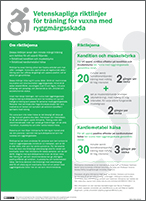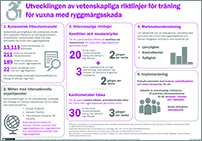In 2018 international scientific guidelines were developed to inform people with spinal cord injury (SCI) how much exercise is necessary for important fitness and health benefits. This page contains information about the guidelines and resources to support their implementation in Sweden. For information or resources for other countries please visit the European SCI guidelines webpage.
An international group of 29 researchers, clinicians, community organisations and people with spinal cord injury (SCI) have developed scientific guidelines to inform people with SCI how much exercise is necessary for important fitness and health benefits.
This process was led by Professor Kathleen Martin Ginis (University of British Columbia, Canada) and Professor Vicky Tolfrey (Loughborough University, UK).
The Swedish part of the process was led by Professor Jan Lexell, Lund University.
The guidelines
Professor Jan Lexell explains why the scientific exercise guidelines for people with spinal cord injury are important.
Further reading
Martin Ginis KA, van der Scheer JW, Amy E. Latimer-Cheung, et al (2018). Evidence-based scientific exercise guidelines for adults with spinal cord injury: an update and a new guideline. Spinal Cord. 56(4):308-321. van der Scheer JW, Martin Ginis KA, Goosey-Tolfrey VL, Hicks AL, Ditor D, West CK, Wolfe DL (2017). The effects of exercise training on fitness and health of adults with spinal cord injury: a systematic review. Neurology. 89(7):736-745.Local contacts
If you have any questions or would like to discuss disseminating the guidelines in your area please contact:
Professor Jan Lexell
Consultant in Rehabilitation Medicine and Medical Director

Jan is newly appointed Professor in Rehabilitation Medicine Uppsala University and Consultant in Neurorehabilitation at Uppsala University Hospital. He is also Professor at Lund University and Head of the Rehabilitation Medicine Research Group. A large portion of his research studies the consequences of a neurologic disability in a life-long perspective with a specific focus on aging with a neurological disability. This research aims at developing rehabilitation interventions that assist people to achieve the highest possible level of functioning. Jan is actively involved in para-sport and currently Standing member of Medical Committee of the International Paralympic Committee (IPC) and Principal Investigator (PI) of a large prospective study of the epidemiology of injuries and illnesses in Swedish Paralymic athletes. He is also Board member of the Swedish National Centre for Research in Sports and Vice chairperson of the Therapeutics Use Exemption Committee of the Anti-doping Committee in the Swedish Sports Confederation.
Email: jan.lexell@neuro.uu.se
Dr Sophie Jörgensen
PhD, resident in rehabilitation medicine

Sophie graduated from medical school in January 2010 and in October 2012 received her license to practise as a physician. She is now pursuing both clinical and research-oriented work as a resident at the Department of Rehabilitation Medicine at Skåne University Hospital, and a researcher affiliated with the Rehabilitation Medicine Research Group. Sophie’s research aims to generate new knowledge of living with long-term spinal cord injury into later life, with a specific focus on aspects of disability, health, life satisfaction, depressive symptoms and physical activity. The results will provide a foundation for the development of rehabilitation medicine follow-up programs and interventions specific to this population. She received her doctoral degree in September 2017. Her thesis is part of a large, longitudinal study, the Swedish Aging with Spinal Cord Injury Study (SASCIS), that was initiated in 2010.
Email: sophie.jorgensen@med.lu.se
Related resources
The art of healthy living with physical impairments
This guide to an active and healthy lifestyle is written primarily for people with a physical impairment. It is designed for people who want more information, who are keen to get in better shape, and who have a desire for a healthy lifestyle and its positive effects. It is also intended for family and friends, personal assistants, rehabilitation professionals, and primary health providers who want to advance their understanding. The book provides adapted programs based on scientific research and clinical experience as well as tips and advice from individuals living with physical impairments.

Food, weight and health for people with spinal cord injury
Healthy food is one of the pillars of health and wellness. Unhealthy eating habits is at the top of the list of risk factors for the most common lifestyle diseases globally. This is true for everyone. This brochure is designed to provide knowledge and awareness about the risk of developing overweight and obesity and the general importance of diet for health and wellness. It is intended for those who have a spinal cord injury and answers common questions such as What dietary guidelines apply? and What should I do if I want to lose weight?


